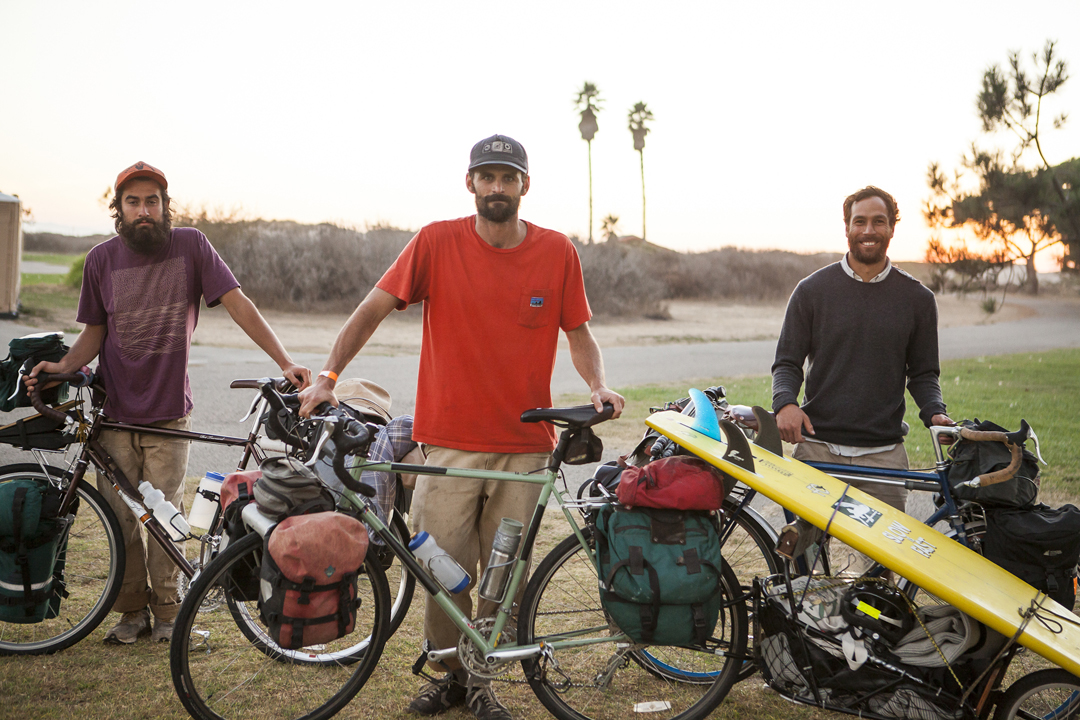
Kellen Keene, Dan Malloy, and Kanoa Zimmerman on the Slow is Fast surf tour. Photo by Kanoa Zimmerman.
Dan Malloy’s surf career began in typical fashion. He started competing in and winning contests as a teenager and eventually attracted the attention of big name sponsors such as Billabong and Hurley. That sponsorship lead to a cycle of world travel for contests, photo shoots, and video filming. For Malloy it was an exciting and privileged experience, but one that also led to serious burn out. He quit competing in the early 2000s, concerned that contests were killing his love for surfing. He continued traveling extensively filming videos, doing photo shoots, and working as a brand ambassador and product developer for Patagonia. In the process he evolved into something of a professional surf nomad with near-constant trips to standard surf destinations such as Indonesia, Hawaii, and Mexico and breaks as far flung as Liberia and Antarctica.
Now 36, Malloy has settled down a bit, at least by his standards. He and his wife have a small working farm with goats and produce in Ojai, California. But he still finds time for surf adventures. In September 2012, Malloy and two friends, Kellen Keene and Kanoa Zimmerman spent two months bike touring down the coast of California surfing and staying with farmers and artisans along the way. From that trip they created Slow is Fast, a book and film that document the surfing, riding, and people they met. I spoke to Malloy about the ups and downs of a surf trip on two wheels, the unique perspectives bike touring provides, lessons learned from his time with farmers and artisans who live intentionally, the possibility of future bike and surf trips, and much more.
Tell me about the trip. What did you do? What were you hoping to accomplish with it?
It was an idea I’d been throwing around for a long time. I’ve been fortunate to be able to travel a ton since I got out of high school. I surfed professionally and was on the road from the time I was 18 until recently. I still get to travel a little bit. I got pretty addicted to traveling and the whole idea of it. But at the same time, when I was about 28 I started to feel like I wasn’t really from anywhere. It sounds like a cliche, but I also started to realize all these places and the amazing magic of traveling are really a way of thinking and a state of mind. You get to a place and it feels really great because there’s no skeletons in the closet, you don’t have any work to do. I really was enamored with trying to get to that same place while I was at home. At home there are really rich experiences to be had and a ton to learn. Home maybe has even more to offer than on the road. It’s just really tricky to get in that same state of mind.
So I thought, how can you do that? How can you be in that traveling state of mind and at home? I decided there’s no better way to do that than go on a bike trip and step out of the normal framework that makes up a day. In California everything is done by car, our entire infrastructure is built around roads and cars. It seemed like a bike trip was a really good place to start. I was talking to my friend Kellen and telling him I was thinking about doing a trip completely by bike. And a pretty long trip, not just a week or so. He got really excited about it and helped me plan. He’s a filmmaker and we’re both pretty interested in farming and learning from craftspeople that we respect. It was a combination of the things: to go on the road and surf as much as we could and also stop by and see people that were doing their own good work and stay with them and actually work a little bit. It was loosely based off of that WWOOFing program where you travel around and work for room and board.
We invited another friend of mine along, Kanoa. We set out to just have a really good time, to be honest. When we started the trip we didn’t have any expectations other than to document what we could. We didn’t have a deal to publish a book or anything like that. We thought maybe we’ll make a little book, but it could’ve been anything from a zine to a nice long thank you to all the people we stayed with. It ended up being a thicker picture book.
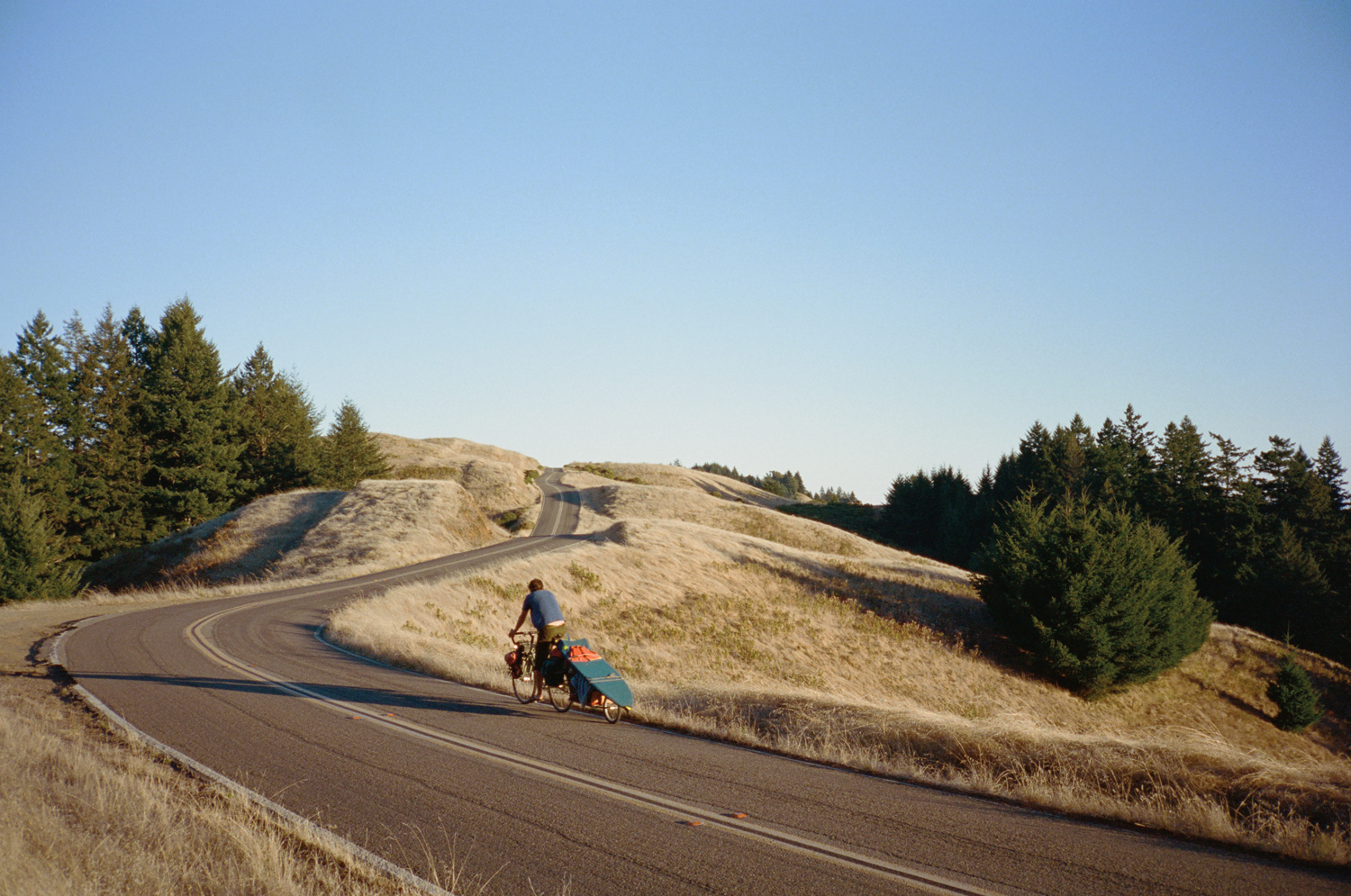
Dan Malloy in Mendocino on his Slow is Fast tour. Photo by Kanoa Zimmerman.
Had you ever done any bike touring before?
I did a week long trip a while ago with a friend of mine named Chris Del Moro in California. It was the same sort of deal where it was along the coast and we were riding and surfing. I just remember having a really great time. You’re getting a ton of exercise. I felt really fit. Food tasted better. I felt really great the whole time. It always stuck in my mind. But that was my only real experience with bike touring.
I’m not an experienced cyclist of any kind. That’s kind of the neat thing about [the Slow is Fast] trip, too. Our goal wasn’t a certain amount of miles every day so it didn’t really require any training. We’d just go as far as we could or as far as we felt like. There’s great camping the whole way. You can even poach little camps here and there. It was a pretty accessible trip. Other than the fact that the trip ended up being two months. Not too many people have a two month break. But you could do a similar trip to ours with zero training. Our budget was basically just paying for food.
What was it like combining surfing and riding? Did it enhance the experience or did you find yourself worn out in a way that detracted from both?
I feel like they go hand in hand. It just depends on what kind of surfer you are. The guys who want to get the absolute best waves in the area and surf on the most optimal equipment for the conditions might be a little frustrated by this mode of transportation. I’ve been able to surf all over the world. I’ve been a little spoiled to be honest. So now for me, I really just look at the ocean and surf as a way to blow off some steam at the end of the day. In that vein, it’s really perfect and goes hand in hand with [bike touring]. You’re not too worried about having the perfect equipment for each spot, you just want to get in the water. I feel like surfing is that much more fun when you put in some physical effort, whether it’s work or cycling or whatever. It’s that much more refreshing to get in the water and catch a few waves. For me it was great. But often you’re not going to get the best waves in the area. For that you need a little better way to get around. But that frame of mind doesn’t really work for me anyway.
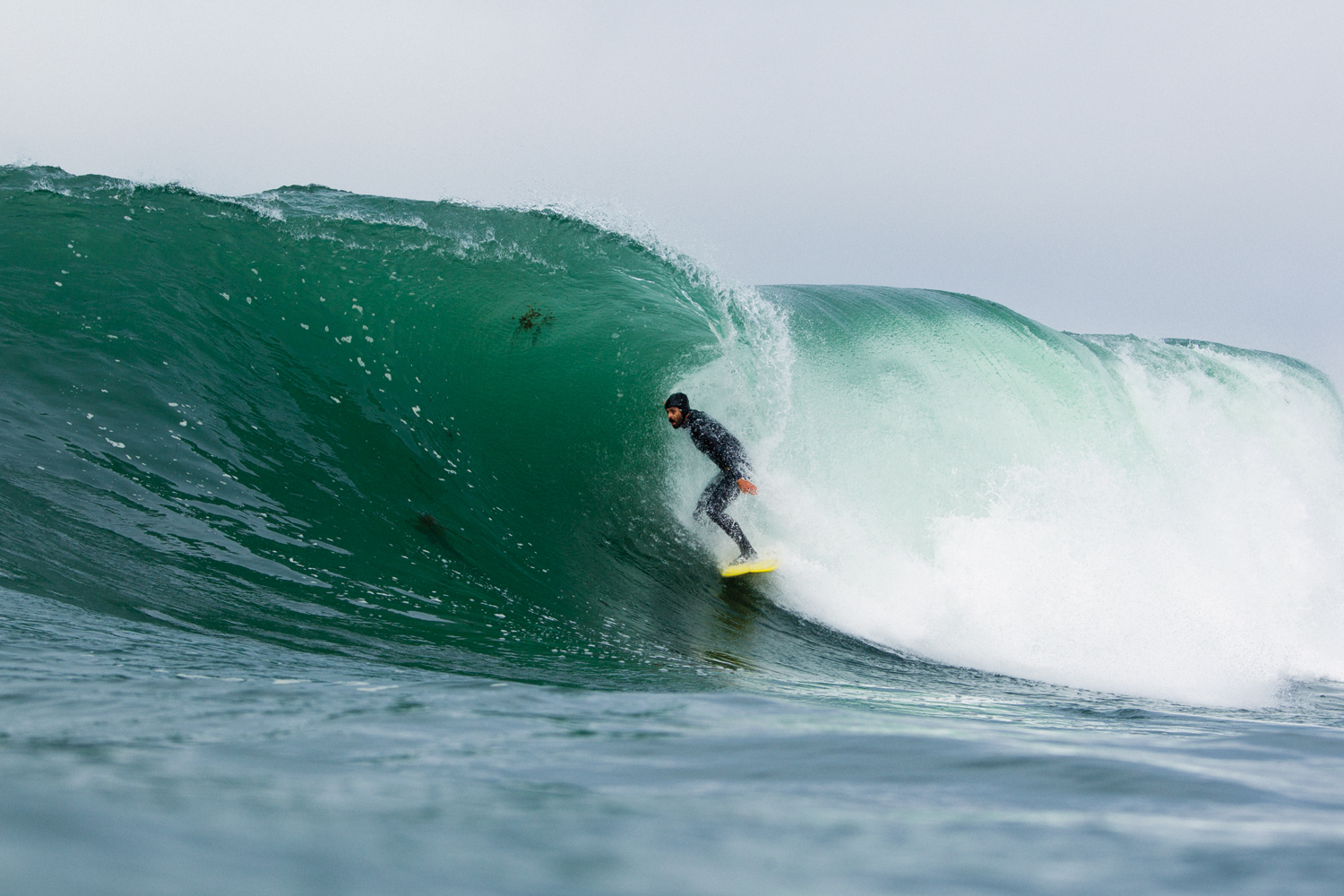
Dan Malloy surfing in central California on his Slow is Fast tour. Photo by Kanoa Zimmerman.
You spent a lot of time with farmers, artisans, craftsmen and women throughout California, obviously extending the theme of slow is fast. How did this trip shape your thoughts on intentionality?
I live a pretty fast paced life and the trip was definitely a reminder to me to slow down. It wasn’t about us outwardly telling people they need to slow down, it was more of a personal reminder. And it informed me a ton. It didn’t change my mind so much, but it kind of affirmed my thought process in the last 10 years or so. There’s a ton of good in technology and this fast paced life. But we’re also ignoring some really important traditions that have been passed down and really important parts of culture have been put aside for this new economic and technological model.
There are all these people in that same boat as us where they’re looking to learn from past generations and other amazing people. Everything’s not all just going to be fixed for us by technology and business today. You start to talk to these interesting people about what they’re into and they’re so excited to share and learn and teach. It was a total blast to spend time with people on our adventure.
Slow is Fast stands in stark contrast to the surf world at large–as well as mountain biking, skiing, climbing and other outdoor pursuits–where it’s standard to hop in a car every time you head to the beach, fly around the world for contests and photo shoots, where each season’s new gear is part of a planned obsolescence for last season’s gear. Do you feel like there are positive elements or lessons from your tour that can be applied to the broader surf world?
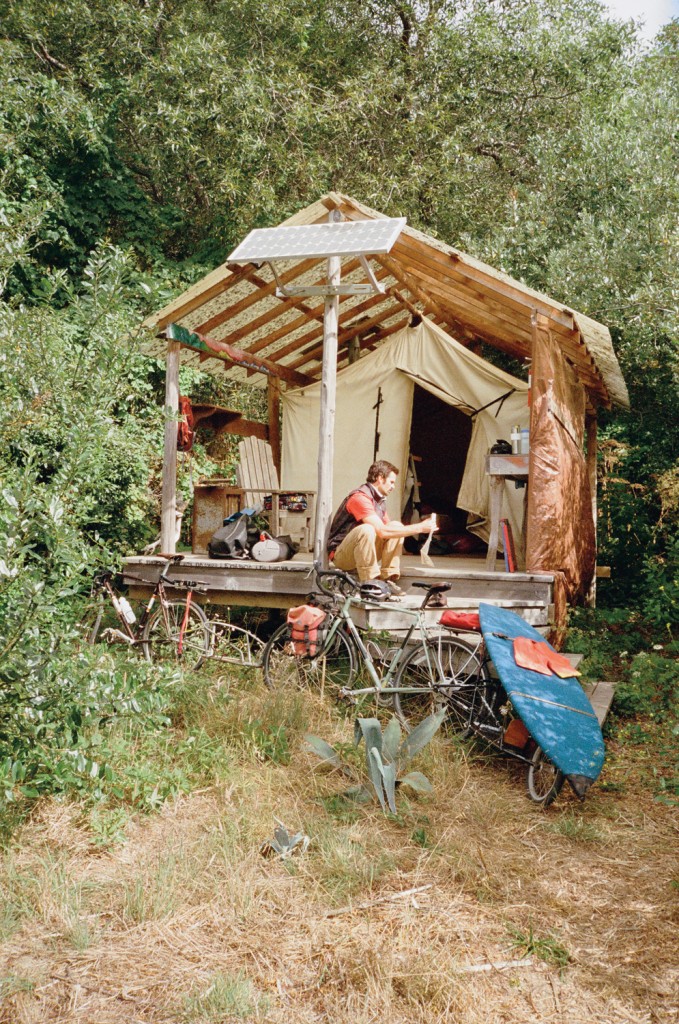
Dan Malloy at Oz Farm on the Slow is Fast tour. Photo by Kanoa Zimmerman.
Well, I don’t know about applying them to the broader surf world. But this trip was an experiment. When I first started out on the project it was independent–Patagonia picked it up later–so there wasn’t this huge pressure for the content to be action packed. That was a huge goal of the trip. Whether it’s climbers or surfers or artists, all of my favorite photos of those people aren’t from their peak action moments. It was just something that was captured in a really interesting time. That’s the exact opposite of what is happening now in surfing. The pressure is to get amazing imagery. We all know really amazing imagery catches your eye and sells products and does all that stuff. But I’ve been around it enough to know the tail wags the dog a lot. You go on these trips and there’s very little substance beyond trying to get great images.
That’s why I called Kanoa. He’s a really thoughtful, patient photographer. He took just a fraction of the amount of photos that a commercial photographer would take. He mostly shot film and probably shot two to three rolls a day at the very most. That’s somewhere around 90 pictures a day when most of the photographers I travel with take 1000s a day. There’s a lot of stuff we didn’t shoot because it didn’t feel like the right timing. We tried to make the actual trip the important part, not the images. It was an experiment to see if we could still get interesting images with our different approach. We didn’t sell a lot of ads, but the book came out and we’re all proud of it. It’s nice to see that you can still do good work without trampling all over it by being intent on just getting the images.
One of the striking things about the film is that the majority of the footage is scenes on the farms or talking with a knife maker, etc. There’s actually fairly little surf action or footage from biking down the coast.
That was super intentional. I didn’t want to spend our whole trip re-riding this one part that goes by the sign that says where you are so you can thread together this narrative. I wanted to spend the trip actually being with people. At this point in my life it just kind of drives me crazy to re-shoot stupid bullshit that in the moment is just a hassle. Making films is really, really hard work and we didn’t want to make a film about us in the first place. Kellen, Kanoa, and I all decided early on not to spend countless hours on the road filming ourselves. We did the whole part that had to do with us with a shitty green screen set up in about four hours. I can’t even tell you how thankful I am that we made that decision. All of that time we instead spent catching up with characters on the road, or working and not shooting at all, just enjoying the actual trip.
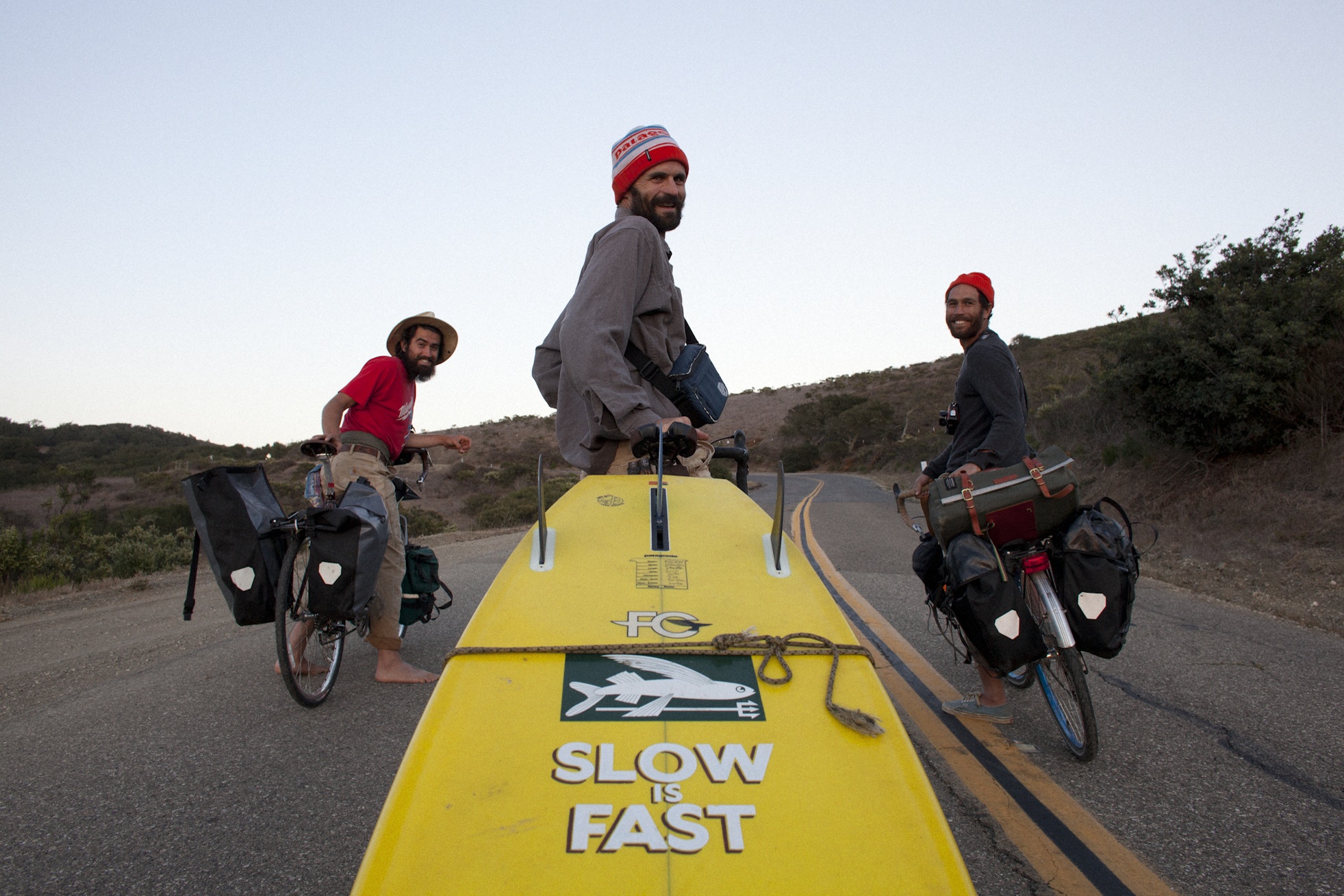
Kellen Keene, Dan Malloy, and Kanoa Zimmerman on the Slow is Fast surf tour.
Do you think you’ll ever do a surfing bike tour again?
I hope so. I’ve thought about doing one in Japan. Doing one there modeled after our California trip would be really fun. Japanese culture is really interesting to me. There’s some fun surf there. There are some really neat people. But I don’t know if it’ll happen. Two months is a long time. I’m kind of settling down here in Ojai. My wife and I have a little farm of our own and there’s a lot to do there. But I sure hope it can happen. This was one of the best trips of my life, honestly. It was amazing. I felt like I learned so much and felt more connected.
When I talk about central California now I have a very different perspective. Mileage wise, climate wise. It’s not like I can remember every little creek and valley, but there’s a different perception now than when I was just driving it. You don’t perceive much when you’re driving. You’re listening to music, you’re in your little bubble. When you’re riding there’s a lot going on. I think you’re a little more aware of where you are. Most of the time your legs are burning. You feel the wind direction change. You smell the trees. There’s all these things that keep you a tiny bit more grounded in what’s happening around you.
It was kind of enlightening. There was a real magic to the way people reacted to us on our bikes. I’ve never had people react the way they did. Since you have a lot of time when you’re bike touring, it enables you to create the space for interesting interactions. I had so many people come up to me and say, “hey, if you want we’re barbecuing tonight” or “there’s a place on the side of my house, you’re welcome to camp out.” People were just really open and it really changes the dynamic between you and them. It was strange. It almost felt like someone was playing a joke on us because every day we were having these interactions that pretty much never happen otherwise. I was always trying to figure out what it was and why it was happening on this trip. I think one, it had to do with being on the bike and two, having a little bit of time on our hands. On the bike, schedules change. You usually don’t have to be anywhere specific and you can change your plans. It really opened my eyes to how interesting bike travel can be.
Like what you read on The Bicycle Story? Support the work with a donation or by buying a shirt.
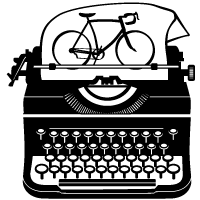
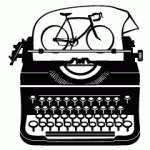
3 Responses to Dan Malloy: Slow is Fast When You’re Surfing by Bike